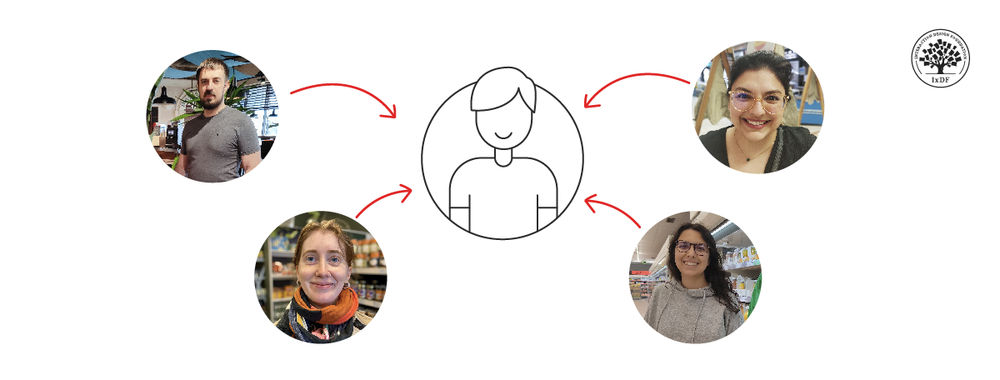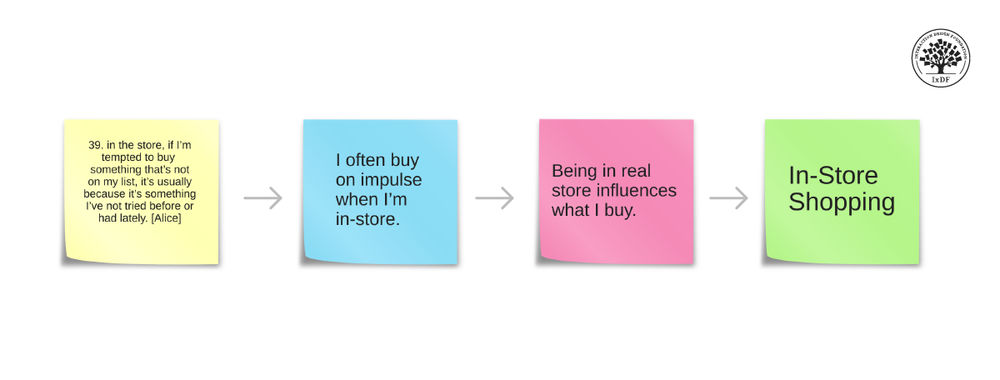Both research-based and example-based learning have their merits. Different types of learning provide different insights, and they are both keys to becoming a great designer. At the Interaction Design Foundation, we combine both approaches wherever possible. When taking our courses, you will feel this “oscillation” between examples and research—so, let’s take a closer look at the pros and cons of each. We will start with the pros and cons of example-based learning.
Pros and Cons of Example-Based Learning
You may have noticed that design education often seems to teach from a personal, anecdotal, and example-based perspective. This approach is often embodied in case studies—e.g., “How our re-design made us lose 43% of our customers” or “How we increased the ecommerce conversion rate by 24%“.
Example based learning is valuable and you’ll experience this approach a lot in IxDF’s courses. However, when the example-based mindset is taken to an extreme and applied in development processes, the approach is embodied in statements like "just copy the apps you like" and in a Just-Fucking-Do-It (JFDI) development process. One of the advantages of example-based learning – or indeed development – is that you don’t easily fall into "analysis paralysis" and that you get your design "out there" as fast as possible. It is an approach often used by entrepreneurs with the tenet of "fail forward".
 Author/Copyright holder: Uber Technologies Inc. Copyright terms and licence: Fair Use
Author/Copyright holder: Uber Technologies Inc. Copyright terms and licence: Fair Use
For example, following the success of the online taxi service Uber.com, many start-ups brand themselves like “Uber for X”: We are “Uber for Home-delivery”, “Uber for Laundry” and essentially try to copy the business model, marketing and success of a well-reputed company.
This approach of copying a design or a business model is well known and is the core of example-based learning and development. The approach does indeed work to a certain extent, but it—unfortunately—also contains the dangers that lead to massive failure.
“He who loves practice without theory is like the sailor who boards ship without a rudder and compass and never knows where he may cast.”
– Leonardo da Vinci, leading artist and intellectual of the Italian Renaissance who's known for his enduring works "The Last Supper" and "Mona Lisa”.
Pros and Cons of Research-Based Learning
As stated above, example-based learning from practice can be great. However, we should not accept an over-simplified division between “research versus practice” or “academia versus industry”. It is regrettable that many design courses underemphasize, or simply ignore, the known science behind the human interactive experience: Research will teach you the tried and tested techniques, and the IxDF prioritizes solid research. And we always relate theory to practice:
“Experience without theory is blind, but theory without experience is mere intellectual play.”
– Immanuel Kant, German philosopher and key figure in modern philosophy, active in the 18th and 19th centuries: his impact endures, particularly in how the main concepts of the mind structure human experience.
Our courses focus on the sciences that underlie the User Experience, such as psychology and sociology, and include research to help you understand what works and what does not work. And, most importantly, why it does – or does not – work. That is the main advantage of theory and research—i.e., to be able to look below the surface and peek into the “inner mechanics” of what makes a great design so great.
“Research is to see what everybody else has seen, and to think what nobody else has thought.”
– Albert Szent-Gyorgyi, Hungarian American physiologist, Nobel Prize Winner, credited with discovering vitamin C.
 Author/Copyright holder: Harald Groven. Copyright terms and licence: CC BY-SA 2.0
Author/Copyright holder: Harald Groven. Copyright terms and licence: CC BY-SA 2.0
We promise you will never feel like these guys when you’re studying with the IxDF. By the way, if you don’t happen to recognize the two guys, they are author Franz Kafka and sociologist Max Weber whose ideas profoundly influenced social theory and social research. This image went viral among social researchers – and yeah, no comments on the lack of Photoshop skills :-)
The Take Away
The courses from the Interaction Design Foundation aim to hit a “sweet-spot” between example-based and research-based learning. We aim to stay firmly grounded in practice and real-life examples, but—at the same time—we help you move away from the dangerous de-intellectualization of design that is the cause of so many design failures:
“The difference between design and research seems to be a question of new versus good. Design doesn't have to be new, but it has to be good. Research doesn't have to be good, but it has to be new. I think these two paths converge at the top: the best design surpasses its predecessors by using new ideas, and the best research solves problems that are not only new, but worth solving. So ultimately design and research are aiming for the same destination, just approaching it from different directions.”
– Paul Graham, Hackers & Painters: Big Ideas from the Computer Age. Paul Graham is an English computer scientist and venture capitalist who is known for his work on Lisp, for co-founding Viaweb (which eventually became Yahoo! Store), and for co-founding the Y Combinator seed capital firm.
References & Where to Learn More
Hero Image 1: Author/Copyright holder: Derek Curry. Copyright terms and licence: CC BY-SA 2.0
Hero Image 2: Author/Copyright holder: Phil Aaronson. Copyright terms and licence: CC BY 2.0
Don Norman, 27th annual conference of the Travel and Tourism Research Association, Las Vegas, p. 143, June 1996
Steve Jobs: Good artists copy great artists steal. Interview with Steve Jobs about the creation of the Apple Macintosh. Did Steve Jobs steal from Xerox PARC? 1994.
Paul Graham, Hackers & Painters: Big Ideas from the Computer Age, 2004












